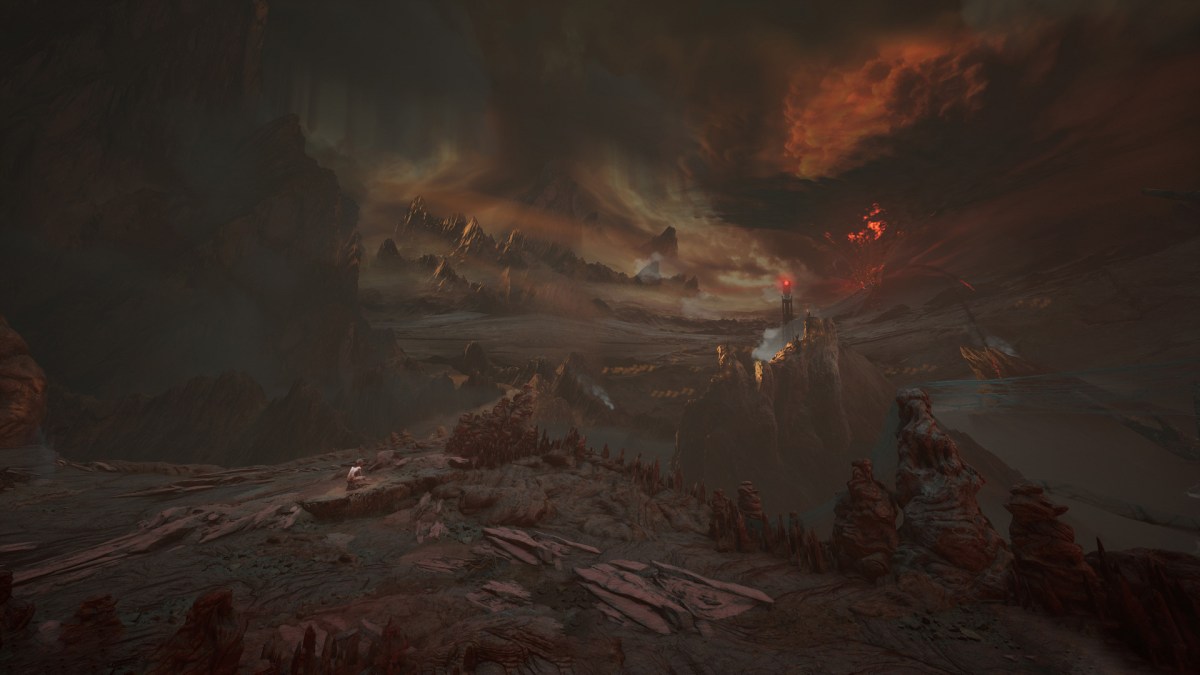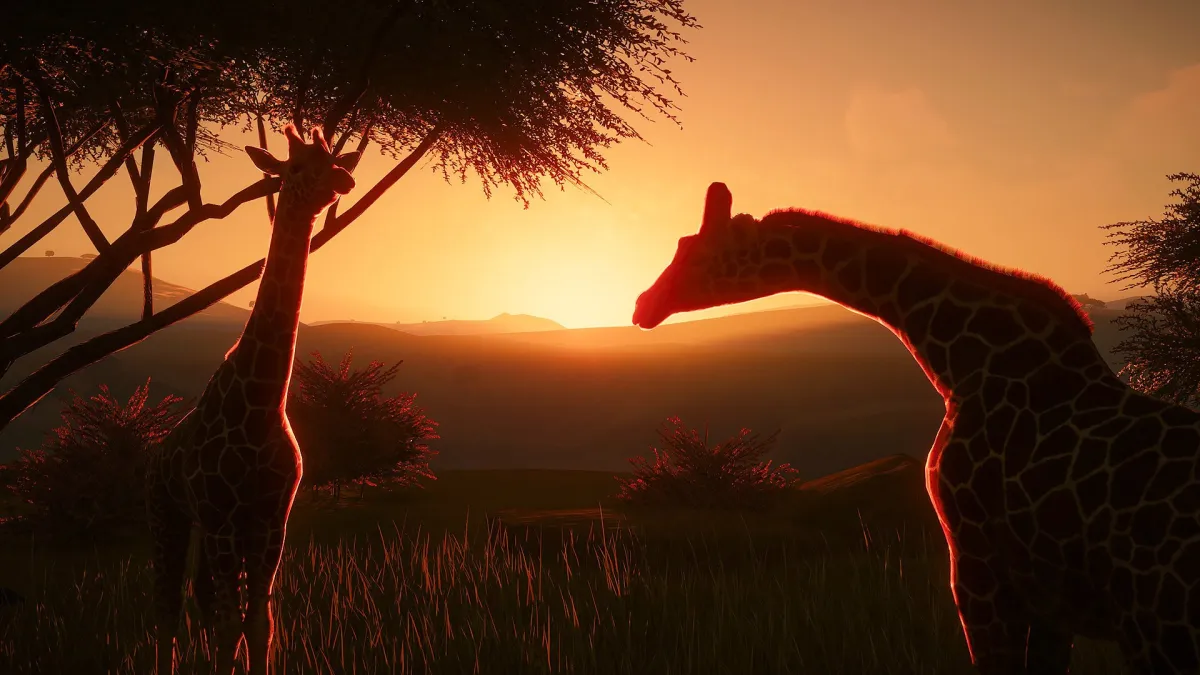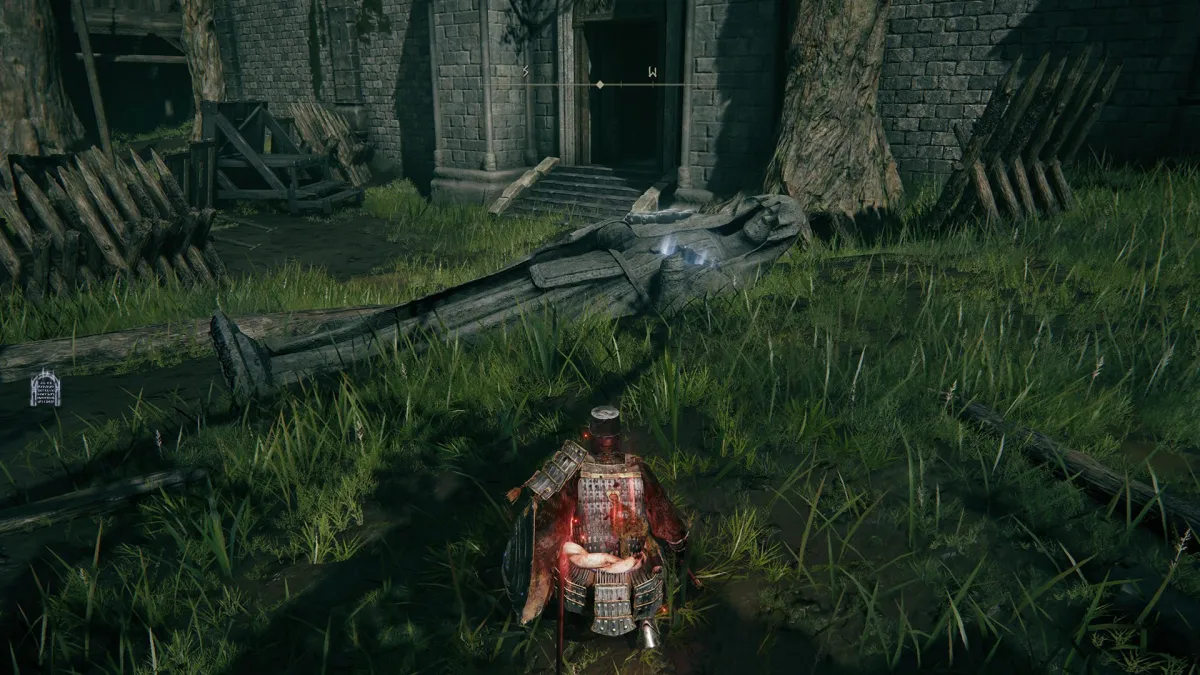The emphasis in his title is fairly undisputed at this point
It’s fair to say that The Lord of the Rings (and by extension, The Legendarium, a catch-all term that covers J. R. R. Tolkien’s Middle-earth works) is a huge part of my life. I’m writing this now listening to the soundtrack of the Peter Jackson trilogy, after having come back from a four-player session of The Lord of the Rings LCG co-op card game. Oh, and I went to a Tolkien-related academic conference this past weekend: Mythmoot 2022.
It was there that I caught up with Dr. Corey Olsen, The Tolkien Professor (more on that peculiar emphasis in a moment) to talk about his involvement with the Return to Moria game, as well as some thoughts on the upcoming Gollum project.
For hardcore Tolkien fans, Dr. Olsen needs no introduction. But I’m going to do one anyway! Dr. Olsen has a PhD in medieval literature, and has risen the ranks as one of the most preeminent modern Tolkien scholars worldwide. This came to a head in 2012, when he founded Signum University, an online graduate school focusing on literature and philology. He also has done consultation work for myriad Tolkien-related projects (including video games), and hosts a comprehensive podcast that not only covers Tolkien, but academia in general. So about that name. At multiple academic conferences I’ve attended online and in-person, the anecdote of disputing Olsen’s title of The Tolkien Professor is commonplace. But the story always ends the same: they check Dr. Olsen’s credentials, and submit that the moniker is legit. We even got another one of those tales from esteemed professor Michael Drout at this year’s Mythmoot; jokingly pointing out that he called his spouse into the room to listen to a rant, incredulous that anyone would call themselves The Tolkien Professor.
As you can imagine, sitting down to talk to Dr. Olsen is a treat, and even after an extensive interview session, I felt like I could have talked to him for hours. One of the first things I brought up: his involvement in the Return to Moria game, coming out in 2023 on PC. As Dr. Olsen puts it: “It was a fairly serendipitous connection. The game director listens to my podcast, so he emailed me one day with a random question related to the game. I got to talking with him, and I had done some game consulting before, so I was expressing enthusiasm…saying I had done this stuff before and it was really fun, and he was like ‘wait, really?’ So he invited me in, and although I didn’t start at the beginning of the project, basically my role has been to…they produce the story and we discuss it.”

Dr. Olsen continued on, explaining how the project excited him because much of it covered “all of the dwarf stuff that Tolkien didn’t write.” Then Dr. Olsen dropped a bombshell: “As far as I know, this is the first adaptation that takes place during the Fourth Age.” What?! Ever since I talked with the LOTRO team I’m on the lookout for the phrase “Middle-earth Enterprises.” I’ll spare you the legal rabbit hole of complexity this journey took me on, but suffice to say this essentially boils down to the rights to use content from the core book series. A lot of past stories, particularly ones from the First or Second Ages of the Legendarium (the core book series takes place in The Third Age), would need approval from the Tolkien Estate. Generally speaking, The Fourth Age is untouched, outside of some elements of textual ruins from Tolkien himself.
So I asked, “How is Return to Moria covering The Fourth Age?” But it dawned on me as soon as Dr. Olsen started explaining it. The secret sauce to unlocking the full potential of practically every Tolkien-related project: the appendices. For the uninitiated, the appendices are a portion of Return of the King that fill in a ton of detail on other happenings in Middle-earth. Some of it deals with what’s happening concurrently in The Hobbit and The Lord of the Rings. A lot of it deals with past events. But in any case, it can help creators legally fill in the gaps or provide lots of info and content to glom onto.
Dr. Olsen gets specific in terms of what Moria is able to touch on: “So the fragments that were there, we know what Gimli was up to. Gimli goes on to become the lord of the Glittering Caves…and we know that the dwarves of Erebor helped repair the gates of Minith Tirith with mithril and steel. So that’s a little bit to work with. The appendices do tell us some things. And honestly for this kind of a story, it helps to provide the frame in that way. It is implied…when Gandalf reads the Book of Mazarbul [editor’s note: this was the book Gandalf flips through in the Fellowship of the Ring film in Moria], he says ‘it was valiant but foolish, the time had not yet come [to retake Moria].’ Well that’s a fun hook [laughs]. So by that token, the time will come!”
Dr. Olsen relishes the opportunity to tell these types of open-ended stories:
“It’s fun to dramatize the stories that Tolkien depicted. But it’s even more fun to develop the stories that Tolkien hinted at but never wrote. The Amazon Prime series is leaning into this…The War of the Rohirrim [editor’s note: did you know there was a Lord of the Rings anime film coming in 2024? Wild roads ahead], for that we get an outline of the story of Helm Hammerhand in the appendices. For me, one of the most interesting stories…and we only get fragments of this, is Fram slaying Scatha the worm…and that’s of course where Merry’s horn comes from, that he’s gifted.”

It reminded me of how sometimes, creators and fandom can take an individual kernel of a story, like the Jabberwocky in Alice in Wonderland, and form an entire mythos around that. Dr. Olsen and I went back and forth a bit about the general nature of visual mediums, and how they can be especially difficult to do “correctly” with the weight of Middle-earth behind it. Sometimes, things are so detailed that they have a clear framework in mind, and in other instances, they’re barely explained. Dr. Olsen subsequently dug into this topic:
“Its really hard, I mean Tolkien talked about that. He was thinking primarily of stage plays, before high effects movies were even possible. But he talked about, how you read a story, how you have your own mental picture. Not just how Frodo looked like, but imagine the description of what they ate at the Prancing Pony…you know the cheese, the butter, the bread. What did that look like? How much bread and butter are we talking about? It’s very likely different for everyone…how it pops in your head. But the people doing the adaptation have to get a loaf of bread…and now that is the bread in the scene. So I do think adaptations like the card game, like the tabletop role-playing game, it leaves the reader’s imagination much more free, unlike when you’re watching something, or playing a video game.”
That said, there is another side of that coin, Dr. Olsen posits:
“A lot of people have a very simplified idea of what it means to link an adaptation to the text. By simplified I mean…if you’re saying something that Tolkien didn’t say, or telling a story that Tolkien didn’t tell, it’s not an adaptation…well it is. It’s possible to tell a story not related at all to Tolkien…but that’s not what people do. In terms of my experience, so with Return to Moria, what does Moria look like 50 years after the Balrog was defeated. So when you’re inventing stories to tell those gaps, it’s how those stories are related to the text…what Tolkien themes you’re working with, and in some cases how you’re paralleling the story in some way. So there are ways I know that the Amazon Prime team has been working with in their show, and ways that the Moria team is doing that…that is still a really interesting form of adaptation. It’s a really fun exercise.”
I know exactly what he’s talking about. A lot of adaptations, while telling their own stories, do stay true to the spirit of Tolkien. Some (Shadow of Mordor and Shadow of War come to mind) do not, but give their own spin on the universe in turn. As far as the Gollum game goes, Dr. Olsen expressed confidence in that team’s direction as well:
“Here’s the thing that fascinated me most about what I saw about the Gollum game. You’re literally playing a murderer…he killed and ate babies…[Sam was right! I interject]…it’s the first ever, to my knowledge, least-combat-intensive Tolkien video game I’ve ever seen. Despite the fact that you’re again, playing a murderer, there’s less violence. This is not an RPG where you start off as a low-level character and get weapons or powers.. So he’s tough, he’s resilient, he’s agile.. But my question to the developers was ‘do your skills change much?’ And they said ‘actually no.’
So there are ways in which you can change, but you’re Gollum, and his skill set is known. There is some combat, but if a patrol of orcs discovers you, you’re just hosed, because they’re bigger and stronger and you’re not. You can use stealth, but you can’t just go out and take them. I haven’t played the entire thing, but what I saw of the concept was really fascinating.”

It was here in our conversation that Dr. Olsen ultimately wished for a world where we can “go beyond action games.” He clarifies that he doesn’t mean “there shouldn’t be any action” in a Tolkien-related game. Sometimes, he loves playing LOTRO and taking out an orc camp of 30 orcs. But the reason he’s looking forward to Gollum quite a bit is to see how they can pull that fantasy off, and potentially eliminate the glorification of combat and war that many other Tolkien projects depict (including the mind-bogglingly R-rated uncut third Hobbit film). To that end, I asked Dr. Olsen if he’s spotted anything egregious when it comes to how past adaptations have handled some Tolkien works (I threw anthropomorphic Shelob out there, as well as Celebrimbor manifesting in the form of a giant anime explosion), and he had a lot to say:
“Well [long pause]…so dating back to the Peter Jackson films, which of course set the tone for so much afterwards. There are some ways in which the Jackson films are delightfully true to the works in many ways. But there are a few in which they’re very very far. Not even plots and characters, but deeper thematically. The single biggest thing I always point to is the de-mythification of the story. It’s not that I don’t understand it. I’m not even arguing against it, I see how it worked in the film. In Tolkien’s world, our point of view is the hobbits. They’re our frame of reference for the entire story. You know how the story always goes out of its way to provide a frame of reference…we even split up Merry and Pippin, so everywhere, Mordor Gondor…there’s a hobbit.
We even see The Ride of the Rohirrim through Merry’s eyes. There’s very little in which we have no hobbits at all. We don’t look at Aragorn, Gimli or Legolas shoulder to shoulder. We picture ourselves with the hobbits being rescued by them. The camera angle as it were, is three feet off the ground. Which means that big people are Capital B big. We look up at Aragorn. We don’t relate to him…we’re not meant to relate to him in the same way. Faramir, an even more dramatic example. They’re not perfect…we look up at Boromir [it’s here that I interject, and we subsequently agree that book Faramir is perfect]…we’re caught up in the adulation of the hobbits. So when I say the de-mythification I mean the stories are myths, and have the weight of that. You can connect with Aragorn, but not like that. The Jackson films changed that reference. The most obvious one is uncertain Aragorn. It works in the film in ways. To me that approach is the most egregious change…foundational change. That you take it from essentially…it’s not an epic anymore.”
We talked a bit about Shadow of Mordor, a common example of one of the most contentious ways to address Tolkien’s work. Dr. Olsen continues his thesis on how adaptations can exercise a degree of freedom, to a point:
“I wouldn’t automatically dismiss a shapeshifting Shelob. In theory. The question is now what do you do with that. What are you getting at. And this is why, and I don’t like to make statements about Shadows of Mordor, but from everything I’ve seen and they’ve talked about…the premise of, Sauron has done wrong to me and I want to take vengeance on Sauron but getting a ring of power to dominate my enemies, as a premise, I literally cannot…In my mind that’s like a laboratory construction of the most alien-to-Tolkien-concept I could possibly imagine. To me that’s what matters. What are the themes that you’re getting at, that’s where you really hit bedrock of if it’s true to Tolkien or not.”
I was able to sit in on several talks at Mythmoot this year that touched on these topics: and all of these new adaptations will have to take on that gargantuan responsibility, too. It feels like there’s been an explosion of projects lately, perhaps best typified by the Amazon show. So why are there so many adaptations on the horizon? Dr. Olsen lends his thoughts, spurred by my question of whether or not there’s a future where the Tolkien Estate opens the floodgates to First and Second Age stories wholesale: “I do believe that the impetus behind this new wave is basically from the estate. I mean they did open up things already to an extent…we can see that in the Gollum game, the Amazon show, the Rohirrim project. If the storyline of the Moria game succeeds…I hope we can accomplish the ability to capture the mythic elements of Tolkien.”
Hopefully we see that magic distilled in video game form as soon as this year with Gollum, and in 2023 with Moria. Until then, I have plenty to ponder as a result of Dr. Olsen’s interview, and the many talented presentations at Mythmoot 2022.




